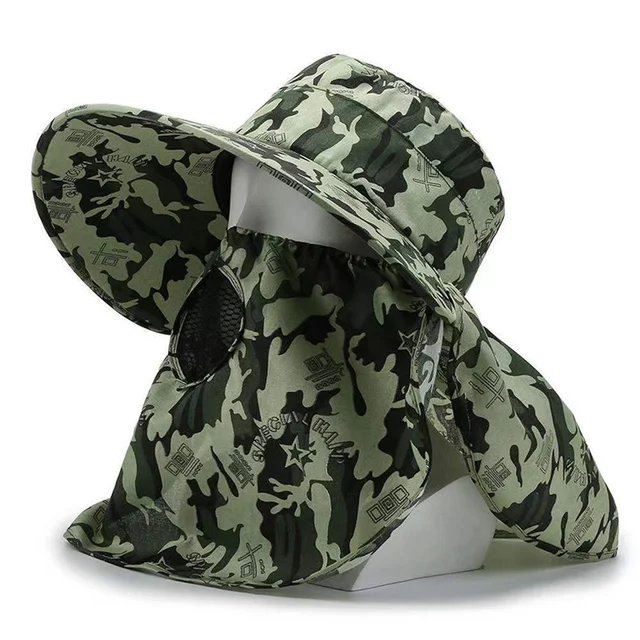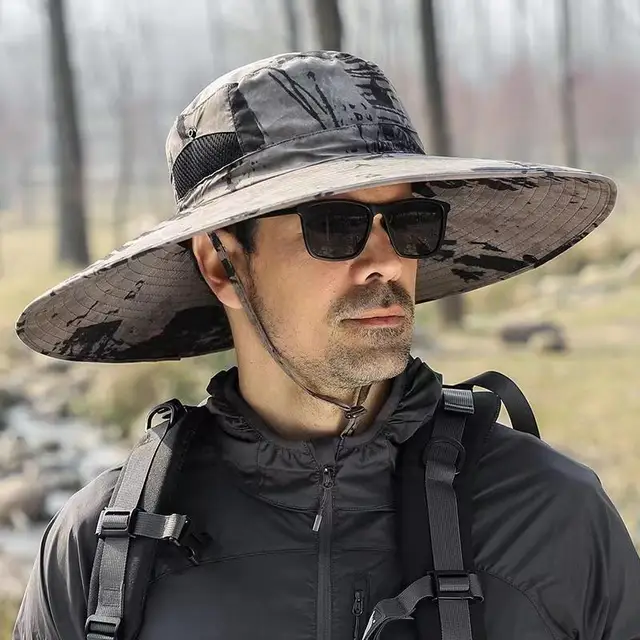
Introduction
These are essential gear for any angler, providing protection from the sun, wind, and rain while enhancing comfort and style. With various designs and features, choosing this item can make a significant difference in your fishing experience. This comprehensive guide covers the history, types, benefits, and tips for selecting and caring, ensuring you find the perfect one for your needs.
History of Fishing Hats
- Origins and Early Designs
- Ancient Times: Early forms of fishing hats were simple head coverings made from natural materials like leaves and animal hides, primarily used to protect from the elements.
- 18th-19th Century: In Europe and America, like straw and wide-brimmed became popular among fishermen for sun protection.
- Evolution in the 20th Century
- Mid-20th Century: The bucket hat, originally designed for military use, gained popularity among fishermen due to its practicality and comfort.
- Late 20th Century: The development of synthetic materials and advances in design led to specialized fishing hats with features like UV protection, ventilation, and moisture-wicking properties.
- Modern-Day Innovations
- High-Tech Fabrics: These are made from advanced fabrics that offer superior protection and comfort.
- Functional Features: Contemporary designs include features like adjustable straps, detachable flaps, and built-in insect repellent, catering to the specific needs of anglers.
Types of Fishing Hats
- Bucket Hats
- Description: Soft, round hats with a downward-sloping brim.
- Material: Typically made from cotton, nylon, or polyester.
- Style: Versatile and casual, providing good sun protection and comfort.
- Wide-Brimmed Hats
- Description: With a broad brim all around, offering extensive sun protection.
- Material: Often made from straw, canvas, or synthetic fabrics.
- Style: Ideal for hot, sunny conditions, providing maximum coverage.
- Boonie Hats
- Description: Similar to bucket hats but with a stiffer brim and often featuring ventilation holes and adjustable chin straps.
- Material: Commonly made from ripstop fabric or other durable materials.
- Style: Practical and rugged, suitable for various weather conditions.
- Baseball Caps
- Description: Caps with a curved brim and an adjustable strap at the back.
- Material: Typically made from cotton or polyester blends.
- Style: Popular for their casual look and comfort, though offering less sun protection compared to wide-brimmed hats.
- Neck Flap Hats
- Description: This item with an extended flap at the back to protect the neck from the sun.
- Material: Usually made from lightweight, breathable fabrics like nylon or polyester.
- Style: Ideal for intense sun exposure, providing additional protection for the neck and ears.
- Visors
- Description: Headbands with a brim that shields the eyes from the sun, leaving the top of the head uncovered.
- Material: Made from cotton, polyester, or a blend of materials.
- Style: Suitable for hot climates where maximum ventilation is needed, but offers limited protection.
Benefits of Wearing Fishing Hats
- Sun Protection
- UV Shielding: Fishing hats with wide brims and UV-protective fabrics shield the face, neck, and ears from harmful UV rays.
- Reduced Glare: Brims help reduce glare from the water, improving visibility and comfort.
- Weather Resistance
- Rain Protection: Water-resistant or waterproof hats keep the head dry in wet conditions.
- Wind Shielding: Hats with adjustable chin straps or snug fits help keep this item in place during windy conditions.
- Enhanced Comfort
- Moisture-Wicking: Fabrics that wick away sweat keep the head dry and comfortable.
- Ventilation: Mesh panels or ventilation holes provide breathability, preventing overheating.
- Insect Protection
- Built-In Repellent: Some hats come with built-in insect repellent or detachable mosquito nets to keep bugs at bay.
- Practical Features
- Adjustable Fit: Adjustable straps and drawstrings ensure a secure and comfortable fit.
- Storage: These items feature pockets or loops for attaching small items like hooks or sunglasses.
How to Choose the Right Fishing Hat
- Consider the Environment
- Sun Exposure: For high sun exposure, choose hats with wide brims, neck flaps, and UV-protective fabrics.
- Wet Conditions: Opt for waterproof or water-resistant in rainy environments.
- Material and Construction
- Breathability: Look for hats with ventilation features and moisture-wicking fabrics for hot climates.
- Durability: Choose item made from durable materials like ripstop fabric for rugged conditions.
- Fit and Comfort
- Adjustable Features: Ensure the hat has adjustable straps, chin cords, or drawstrings for a customized fit.
- Weight: These are more comfortable for long-term wear.
- Additional Features
- Insect Protection: This items with built-in insect repellent or detachable mosquito nets in bug-prone areas.
- Packability: For travel, look for hats that can be easily packed without losing their shape.
- Style and Personal Preference
- Design: Choose a style that suits your personal taste and fishing needs, whether it’s a classic bucket or a modern wide-brimmed hat.
- Color: Lighter colors reflect heat, while darker colors may be more stain-resistant.
Care and Maintenance of Fishing Hats
- Cleaning
- Hand Wash: Most fishing hats can be hand washed with mild soap and water. Avoid using harsh detergents.
- Machine Wash: These are machine washable but always check the care label first.
- Drying
- Air Dry: Allow hats to air dry naturally. Avoid using a dryer as it can shrink or damage the item.
- Shape Maintenance: Reshape the item while it is drying to maintain its form.
- Storage
- Flat Storage: Store hats flat or hung up to preserve their shape.
- Avoid Compression: Don’t stack heavy items on top of the item to prevent deformation.
- Repairs
- Seam Reinforcement: Regularly check and reinforce seams to extend the lifespan.
- Replacing Straps: Replace worn or broken straps and cords to maintain functionality.
Conclusion
These are essential gear that provides protection, comfort, and style for anglers of all levels. By understanding the different types, benefits, and tips for choosing and caring, you can find the perfect one to enhance your fishing experience. Whether you’re braving the sun, rain, or wind, a quality item will ensure you stay protected and comfortable on every adventure.

